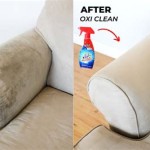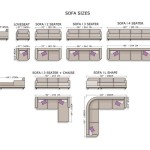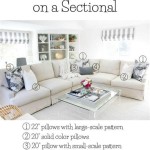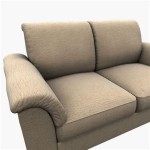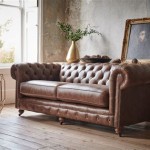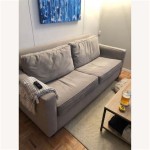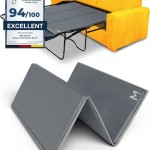Understanding Sofa Parts: A Comprehensive Guide
The modern sofa, a ubiquitous piece of furniture in homes and offices worldwide, is a complex assembly of various components working in concert to provide comfort and support. Understanding the individual parts of a sofa is beneficial for several reasons: it aids in informed purchasing decisions, facilitates proper care and maintenance, and simplifies the process of repair or customization. This article offers a detailed exploration of the key components that constitute a typical sofa.
The Frame: The Foundation of Support
The frame serves as the structural backbone of the sofa, bearing the weight of occupants and providing the overall shape. The materials used in constructing the frame significantly impact the sofa's durability and longevity. Common frame materials include hardwoods, softwoods, engineered wood, and metal.
Hardwoods: Hardwood frames, crafted from woods like oak, maple, or birch, are prized for their strength and resistance to warping. Sofas with hardwood frames represent a significant investment but offer superior durability and can withstand years of use. The joints in hardwood frames are often reinforced with glue, screws, and corner blocks to ensure stability.
Softwoods: Softwood frames, typically made from pine or fir, are a more budget-friendly option. While not as inherently strong as hardwoods, softwood frames can still provide adequate support, especially in sofas designed for lighter use. Proper construction techniques, such as kiln-drying and careful joint reinforcement, are crucial for maximizing the lifespan of softwood frames.
Engineered Wood: Engineered wood, including plywood and particleboard, is frequently used in sofa frames due to its cost-effectiveness and versatility. Plywood, constructed from multiple layers of wood veneer glued together, offers good strength and stability. Particleboard, made from compressed wood chips and resin, is less expensive but also less durable than plywood. The quality of engineered wood varies, so it's important to consider the density and construction methods when evaluating a sofa with an engineered wood frame.
Metal: Metal frames, often made from steel or aluminum, are increasingly popular in contemporary sofa designs. Metal frames offer exceptional strength and can be easily shaped into sleek, modern forms. They are also resistant to pests and moisture, making them a suitable choice for certain environments. Metal frames are typically more expensive than softwood or engineered wood frames but offer a long-lasting and durable solution.
The Suspension System: Providing Comfort and Support
The suspension system is the mechanism that supports the cushions and provides the initial level of comfort and resilience. It works in conjunction with the cushions to distribute weight evenly and prevent sagging. Common suspension systems include coil springs, sinuous springs, and webbing.
Coil Springs: Coil springs, also known as pocket coils, are individual springs encased in fabric pockets. This system allows each spring to move independently, providing targeted support and minimizing motion transfer. Coil spring suspension systems are known for their durability and ability to conform to the body's contours. They are often found in high-end sofas designed for maximum comfort.
Sinuous Springs: Sinuous springs, also called no-sag springs, are pre-assembled units of curved metal wires that run horizontally across the frame. These springs are attached to the frame with clips and provide a firm, supportive base for the cushions. Sinuous spring systems are cost-effective and widely used in mid-range sofas. The gauge and spacing of the springs influence the level of support and comfort offered.
Webbing: Webbing consists of interwoven strips of material, typically made from elastic or polypropylene, that are stretched across the frame. Webbing provides a flexible and lightweight suspension system. It is often used in combination with other suspension systems, such as sinuous springs, to enhance comfort and support. The quality and tension of the webbing are critical to its performance; high-quality, tightly woven webbing will provide better support and resist sagging over time.
The Cushions: The Layers of Comfort
The cushions are the primary source of comfort in a sofa, providing the surface for seating and lounging. The materials used in cushion construction significantly impact the sofa's overall feel and durability. Common cushion filling materials include foam, down, fiberfill, and innerspring coils.
Foam: Foam cushions are widely used due to their affordability and versatility. Different types of foam offer varying levels of firmness and support. High-density foam provides excellent support and resists compression, making it a durable choice for seat cushions. Lower-density foam is softer and more pliable, suitable for back cushions or armrests. Memory foam conforms to the body's shape, providing personalized comfort. The density and type of foam used significantly impact the cushion's lifespan and performance.
Down: Down cushions are filled with the soft, fluffy feathers of ducks or geese. Down cushions offer exceptional softness and a luxurious feel. However, down requires regular fluffing to maintain its shape and can be more expensive than other filling materials. Down is often combined with feathers or other materials to provide additional support and prevent excessive compression.
Fiberfill: Fiberfill cushions are filled with synthetic fibers, such as polyester. Fiberfill cushions are lightweight, hypoallergenic, and relatively inexpensive. They offer a soft and comfortable feel but may not be as durable as foam or down. Fiberfill cushions tend to lose their shape over time and may require replacement. High-quality fiberfill, treated with silicone or other agents, can offer improved resilience and longevity.
Innerspring Coils: Innerspring coil cushions contain individual coils wrapped in fabric, similar to those found in mattresses. Innerspring cushions provide excellent support and resilience, making them a durable choice for seat cushions. They are often combined with layers of foam or fiberfill to enhance comfort and provide a soft surface feel. Innerspring coil cushions are typically found in high-end sofas designed for maximum support and longevity.
The Upholstery: The Surface Aesthetic and Durability
The upholstery is the outer covering of the sofa, providing the aesthetic appeal and protecting the internal components. The choice of upholstery material impacts the sofa's style, durability, and ease of maintenance. Common upholstery materials include fabric and leather.
Fabric: Fabric upholstery encompasses a wide range of materials, including cotton, linen, polyester, and blends of synthetic and natural fibers. Each fabric offers unique characteristics in terms of texture, durability, and stain resistance. Cotton fabrics are breathable and comfortable but can be prone to staining and fading. Linen fabrics are durable and have a natural texture but are susceptible to wrinkling. Polyester fabrics are resistant to stains and fading and are relatively inexpensive. Blended fabrics combine the desirable qualities of different fibers, such as the softness of cotton and the durability of polyester. The choice of fabric depends on the desired aesthetic, lifestyle, and budget.
Leather: Leather upholstery is a durable and luxurious option that adds a touch of sophistication to any room. Leather is available in various grades, each offering different levels of quality and durability. Full-grain leather is the highest quality, retaining the natural markings and texture of the hide. Top-grain leather has been sanded to remove imperfections, resulting in a smoother surface. Split-grain leather is the lowest grade, taken from the lower layers of the hide. Leather upholstery requires regular cleaning and conditioning to maintain its appearance and prevent cracking.
Other Important Sofa Components
Beyond the frame, suspension, cushions, and upholstery, several other components contribute to the overall functionality and aesthetics of a sofa.
Legs: Sofa legs provide support and lift the sofa off the floor. They are available in various materials, including wood, metal, and plastic. The style and height of the legs significantly impact the sofa's overall aesthetic and can influence its comfort. Taller legs make it easier to clean underneath the sofa, while shorter legs create a more grounded and contemporary look.
Armrests: Armrests provide support for the arms and shoulders, enhancing comfort and promoting relaxation. They are available in various shapes and sizes, from traditional rolled arms to modern track arms. The padding and upholstery of the armrests contribute to their comfort and durability.
Backrests: Backrests provide support for the back and spine, promoting proper posture and comfort. The height and angle of the backrest influence the sofa's overall comfort and aesthetic. High-backed sofas offer greater support, while low-backed sofas create a more casual and contemporary look.
Welt Cords and Piping: Welt cords and piping are decorative trim elements that outline the edges of the cushions and frame, adding visual interest and enhancing the sofa's overall aesthetic. They are available in various colors and materials, allowing for customization and personalization.
Buttons and Tufting: Buttons and tufting are decorative elements that add texture and visual interest to the upholstery. Buttons are typically used to secure the upholstery fabric to the frame, creating a tufted effect. Tufting involves creating indentations in the upholstery fabric, creating a diamond-patterned or quilted look.
Throw Pillows: Throw pillows are decorative accessories that add comfort and style to a sofa. They are available in various shapes, sizes, colors, and patterns, allowing for customization and personalization. Throw pillows can be used to add pops of color, texture, and visual interest to a sofa.
Understanding the individual parts of a sofa, from the frame to the upholstery, provides valuable insight into its construction, durability, and comfort. This knowledge empowers consumers to make informed purchasing decisions, ensuring they select a sofa that meets their specific needs and preferences. Furthermore, familiarity with sofa components facilitates proper care and maintenance, extending the lifespan of the furniture and preserving its aesthetic appeal. Finally, understanding the anatomy of a sofa simplifies the process of repair or customization, allowing owners to address minor damages or modify the sofa to better suit their evolving needs.

What S In Your Sofa Bound Collaborative

These Are The Parts Of A Sofa Ilrated Diagram Home Stratosphere

Sectional Sofa Pieces What Do They All Mean

Order Replacement Parts Recliner Franklin Corporation

Treasure Garden Deep Seating Protective Covers

Serwall Outdoor Deep Seating Sofa Set Of 2 Assembly Instruction

Italy Luxury Connelly L Shape Corner Sectional Sofa

Znts Luxurious Velvet Light Brown Color 3 Seater Manual Recliner Sofa Whole United States

Serwall Outdoor Sofa Conversation Set Assembly Instruction

Kinwell Bsc091 Ny Tufted Square Arm Polyester Fabric Mid Century Modern Straight 2 Seater Sofa Instructions


